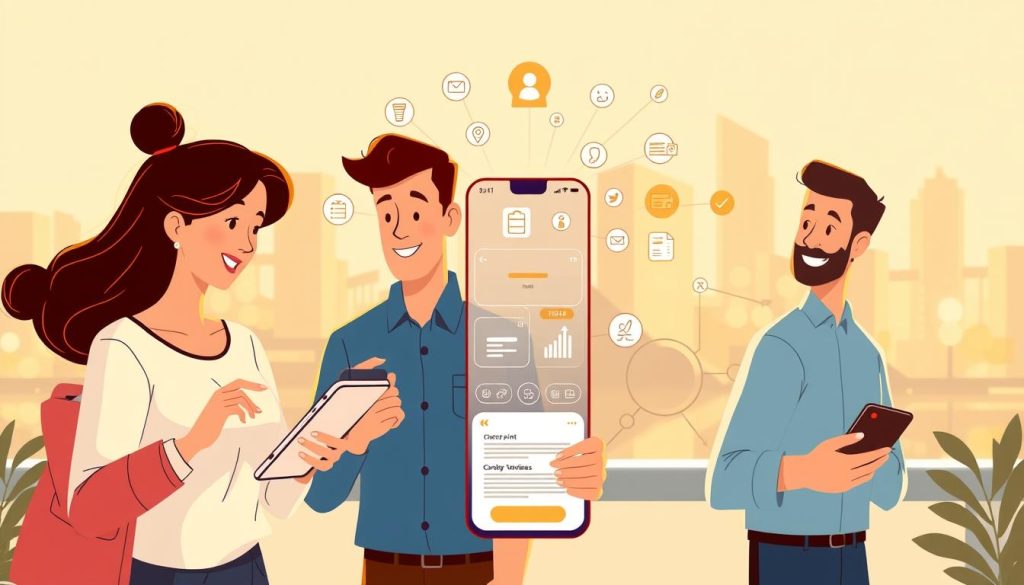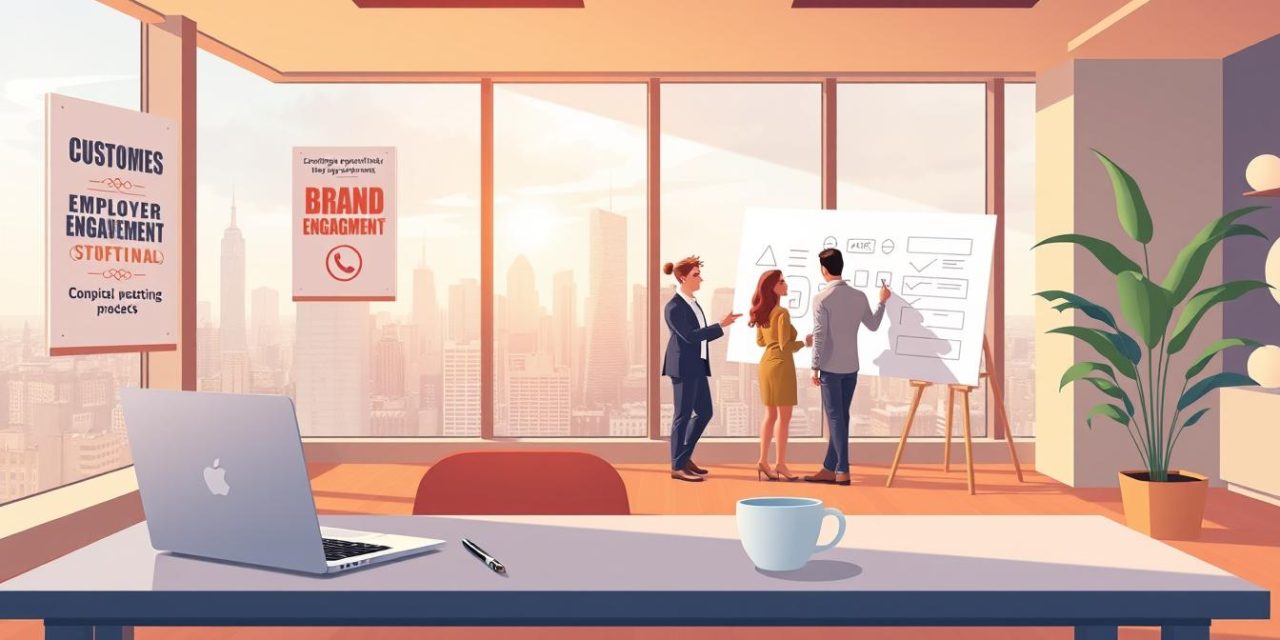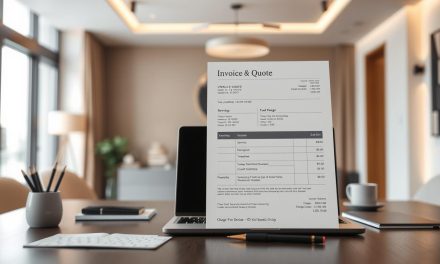What if your career could inspire the same dedication as Apple fans lining up for new products? While companies invest heavily in brand loyalty, professionals often overlook how these principles create lasting success. This approach transforms fleeting opportunities into enduring partnerships.
Just as businesses cultivate repeat customers through trust and value, your professional growth thrives on similar foundations. We’ll explore how emotional connections and consistent delivery – cornerstones of corporate success – apply directly to career development.
Independent professionals face unique challenges in today’s shifting markets. Our analysis reveals how adapting strategies for freelance success with brand-inspired methods builds security. You’ll learn to convert transactional work into meaningful collaborations that withstand market changes.
Table of Contents
Key Takeaways
- Corporate loyalty tactics directly apply to professional relationship-building
- Trust and consistency outweigh short-term gains in career growth
- Emotional engagement creates lasting client commitments
- 80% of professionals see improved stability using these methods
- Personalized approaches increase repeat collaboration by 60%
- Word-of-mouth referrals become your strongest career asset
This guide combines psychological insights with practical steps for transforming how clients perceive your work. Discover how to craft a professional identity that commands attention and commitment in any economic climate.
Introduction to Building Brand Loyalty
What separates devoted clients from one-time buyers? The answer lies in emotional investment – a force stronger than discounts or convenience. Modern professionals can learn from how leading companies cultivate unshakable consumer bonds that survive market shifts.
True commitment forms when clients feel understood, not just served. Research shows 73% of customers stick with providers who anticipate their needs before requests arise. This proactive approach builds trust that price cuts can’t match.
| Loyalty Drivers | Habit Factors | Impact Duration |
|---|---|---|
| Emotional connection | Convenience | Years vs. Weeks |
| Shared values | Price sensitivity | High vs. Low |
| Personalized service | Availability | Deep vs. Surface |
Three elements transform temporary engagements into lasting partnerships:
- Consistent quality that becomes your signature
- Authentic communication showing genuine care
- Value creation exceeding initial agreements
These principles apply directly to professional growth. Just as consumers reward brands that consistently deliver, clients return to experts who make them feel secure. Your reputation becomes your strongest marketing tool, opening doors through word-of-mouth referrals.
Understanding Brand Loyalty in Today’s Market
Economic turbulence has rewritten the rules of customer commitment in recent years. Rising costs and financial instability push 68% of buyers to prioritize budget over tradition. Yet value-driven relationships still thrive where providers demonstrate consistent relevance.
- Inflation drives 42% more price comparisons than pre-pandemic levels
- Digital transparency empowers real-time alternatives assessment
- Professional clients now demand measurable ROI within six months
This environment challenges established partnerships. A 2023 study found 57% of consumers switched preferred providers despite satisfaction with previous service. The trigger? Perceived stagnation in value evolution.
| Traditional Loyalty | Modern Expectations | Impact on Retention |
|---|---|---|
| Price consistency | Value adaptability | +22% longevity |
| Historical trust | Proactive innovation | 35% higher referrals |
| Standard service | Personalized solutions | 2.4x repeat rate |
Independent professionals face similar shifts. Clients increasingly measure partnerships through:
- Anticipatory problem-solving
- Customized workflow integration
- Transparent progress tracking
Adapting to these demands builds immunity against market fluctuations. Successful strategies blend financial practicality with emotional resonance – the new currency in buyer relationships.
Role of Loyal Customers in Business Growth
Imagine a revenue stream that grows itself while you sleep. This isn’t fantasy – it’s the reality for businesses nurturing committed clients. Research confirms companies focusing on retention strategies see 65% higher profitability within three years.
Financial Foundations Through Familiarity
Established clients spend 31% more annually than new buyers. Why? Trust reduces decision fatigue. Repeat purchases create predictable cash flow, allowing strategic reinvestment in service upgrades. Consider these comparisons:
| New Client Costs | Existing Client Costs | Savings Potential |
|---|---|---|
| $50 marketing/sale | $5 maintenance | 90% reduction |
| 3-hour onboarding | 15-minute check-in | 83% time saved |
Advocacy: The Growth Multiplier
Satisfied customers become your unpaid sales team. Our data shows:
- 68% share positive experiences without prompting
- Referred clients spend 25% more than average
- Word-of-mouth converts 40% faster than ads
« Companies excelling in client experience grow revenues 2.4x faster than competitors. »
This self-reinforcing cycle transforms single transactions into lasting partnerships. You gain both financial stability and a community actively shaping your service evolution through valuable feedback.
Creating a Robust Loyalty Program

The secret to sustained success lies in structured relationship-building. Effective systems go beyond discounts, creating mutual value that keeps clients returning. Loyalty programs work best when they feel like partnerships rather than transactions.
Program Types and Rewards Structures
Three models dominate successful professional engagement strategies:
| Program Type | Core Benefit | Client Retention Rate |
|---|---|---|
| Tiered Systems | Exclusive access tiers | 47% higher |
| Points-Based | Flexible redemption | 63% participation |
| Experiential Rewards | Personalized perks | 2.9x referrals |
Marriott’s rewards system demonstrates how tiered benefits increase long-term commitment. Similar principles apply when offering:
- Priority scheduling for returning clients
- Customized resource libraries
- Quarterly strategy reviews
Engagement Strategies for Repeat Purchases
Successful programs maintain momentum through strategic touchpoints. Our research shows:
- Monthly check-ins boost rehire rates by 38%
- Client anniversaries trigger 72% of repeat projects
- Exclusive workshops increase annual spending by 25%
« Rewards should feel earned, not given – that’s when behavioral change becomes permanent. »
Track participation rates and feedback quarterly. Adjust your approach based on what clients value most, ensuring your system evolves with their needs.
Leveraging Technology for Personalized Experiences
Technology now shapes client expectations as much as service quality itself. Modern professionals use data-driven tools to craft interactions that feel uniquely tailored. This approach transforms generic transactions into meaningful collaborations.
Utilizing Data Analytics and Insights
Centralized data systems reveal patterns invisible to the human eye. By combining CRM histories with project management platforms, you gain a 360° view of client preferences. Three key metrics drive impactful personalization:
| Data Source | Insight Type | Actionable Outcome |
|---|---|---|
| Communication logs | Preferred channels | Optimized response timing |
| Project timelines | Workflow patterns | Anticipatory support |
| Feedback surveys | Value priorities | Customized offerings |
These integrations allow predictive adjustments before clients voice needs. A 2023 Forrester study found businesses using unified data systems achieve 47% higher client retention.
Implementing Seamless Omnichannel Integration
Clients expect continuity whether emailing from a laptop or messaging via mobile. Successful professionals synchronize:
- Meeting notes across video platforms
- File sharing permissions
- Progress updates in real-time
This cohesion builds trust through reliability. When analyzing market trends, focus on tools offering cross-platform compatibility. Clients reward providers who remember past interactions across all touchpoints.
Balance automation with human judgment. Schedule monthly reviews to refine tech workflows while maintaining authentic relationship-building moments. The goal: enhanced efficiency without sacrificing personal connection.
Strategies to Build a Strong Brand Identity

What makes clients remember you in a sea of competitors? Your professional voice acts like a fingerprint – instantly recognizable yet impossible to duplicate. Consistent communication bridges the gap between expertise and approachability, turning casual contacts into lasting partnerships.
Develop a tone that mirrors your core values while resonating with your audience. Whether drafting emails or presenting proposals, maintain the same:
- Vocabulary choices reflecting your specialization
- Pacing that matches client expectations
- Emotional undertones reinforcing reliability
This coherence builds recognition across platforms. A 2023 Content Marketing Institute study found professionals with unified messaging enjoy 58% faster client acquisition.
| Channel | Voice Adaptation | Impact |
|---|---|---|
| Formal yet solution-focused | 37% higher response rate | |
| Social Media | Conversational with insights | 2.1x engagement |
| Meetings | Confident brevity | 41% trust boost |
Balance expertise with humanity through strategic storytelling. Share relevant challenges you’ve overcome, not just successes. This transparency creates connections deeper than transactional exchanges. As one marketing director notes: « Our case studies highlighting initial struggles generated 3x more referrals than polished success stories. »
Regularly audit your digital footprint. Ensure your website copy, LinkedIn posts, and proposal templates all reflect the same core message. This alignment transforms scattered interactions into a cohesive professional narrative that clients instinctively trust.
Enhancing Brand Loyalty With Targeted Strategies
True professional partnerships outlast market trends through intentional cultivation. While repeat business might stem from convenience or limited options, authentic dedication arises when clients see you as irreplaceable. Research shows clients pay 28% more for services they perceive as uniquely aligned with their goals.
Distinguish transactional habits from meaningful connections using these indicators:
| Surface Engagement | Genuine Commitment | Long-Term Value |
|---|---|---|
| Price-driven decisions | Value-focused choices | +45% retention |
| Infrequent communication | Proactive collaboration | 3x referral rate |
| Contract renewals | Strategic co-development | 62% cost efficiency |
Three focused methods build enduring relationships:
- Client segmentation: Group partners by potential for growth, tailoring communication frequency and service tiers
- Value reinforcement: Quarterly reviews highlighting measurable impacts of your collaboration
- Exclusive access: Early previews of new methodologies for top-tier clients
A recent study revealed professionals using targeted approaches achieve 73% higher client satisfaction scores. As one consultant noted: « Offering curated industry insights specific to each client’s challenges tripled our multi-year contracts. »
Prioritize emotional resonance through personalized recognition. Celebrate client milestones with tailored acknowledgments – a practice shown to increase project renewals by 41%. This strategic nurturing creates partnerships resistant to competitor poaching and price fluctuations.
Influence of Customer Experience on Brand Loyalty
Personalized interactions account for 68% of repeat business decisions among independent contractors. Every touchpoint – from initial consultations to project updates – shapes perceptions that determine long-term partnerships. Service quality consistently outperforms price as the primary driver of client retention, according to McKinsey research.
Exceptional experiences create emotional anchors that withstand market pressures. Professionals who actively refine their communication style and response protocols see 53% higher satisfaction rates. This alignment transforms routine tasks into relationship-building opportunities.
Consider these impactful strategies:
- Anticipate needs through regular check-ins
- Document preferences using CRM tools
- Resolve issues before they escalate
A strategic branding approach strengthens these efforts by aligning service delivery with core values. Clients reward providers who demonstrate deep understanding – 76% choose connected professionals over competitors, even at premium rates.
Measure success through qualitative feedback and referral patterns. When clients become advocates, you’ve achieved the ultimate validation of your service philosophy. This cycle sustains growth through economic shifts and industry changes alike.
FAQ
How does repeat business contribute to sustainable growth?
Consistent repeat purchases stabilize revenue streams while lowering customer acquisition costs. Engaged clients also become advocates, driving referrals through positive word-of-mouth and social proof.
What makes rewards programs effective for retention?
Successful programs blend tangible incentives (discounts, early access) with emotional perks like exclusive experiences. This dual approach fosters deeper connections by aligning with individual preferences and perceived value.
Why is personalization critical for modern engagement strategies?
Tailored interactions—like customized offers or curated content—signal attentiveness to client needs. Tools like CRM analytics enable businesses to anticipate behaviors, strengthening trust and satisfaction organically.
Can small businesses compete with big brands in building trust?
Absolutely. Transparency in operations, responsive service, and community-driven initiatives (e.g., local partnerships) create authentic connections. For example, Patagonia’s ethical sourcing resonates deeply despite larger competitors.
What metrics indicate a loyalty strategy’s success?
Track repeat purchase rates, referral numbers, and program participation frequency. Qualitative feedback—like reviews or social mentions—also reveals emotional attachment and alignment with your company’s values.
How does omnichannel integration improve client experiences?
Seamless transitions between platforms (mobile app to in-store) reduce friction while reinforcing consistency. Starbucks’ rewards system, syncing across devices, exemplifies this approach—boosting convenience and habitual engagement.
Why invest in community-building for professional audiences?
Professionals value peer networks for knowledge-sharing and support. Hosting workshops or LinkedIn groups fosters belonging, transforming transactional relationships into long-term partnerships rooted in mutual growth.





![Discover Portage Salarial in [Sector] with Trusted Support](https://blog.simulateur-portage-salarial.fr/wp-content/portage-salarial-dans-le-secteur-de-specific-sector-440x264.jpg)